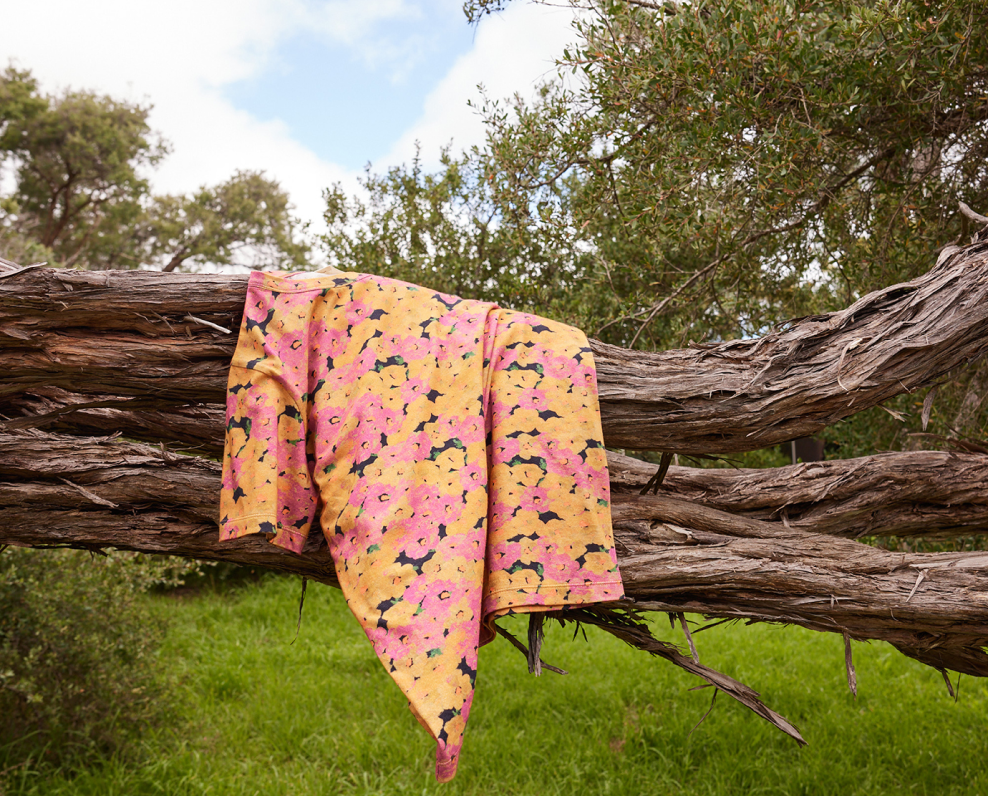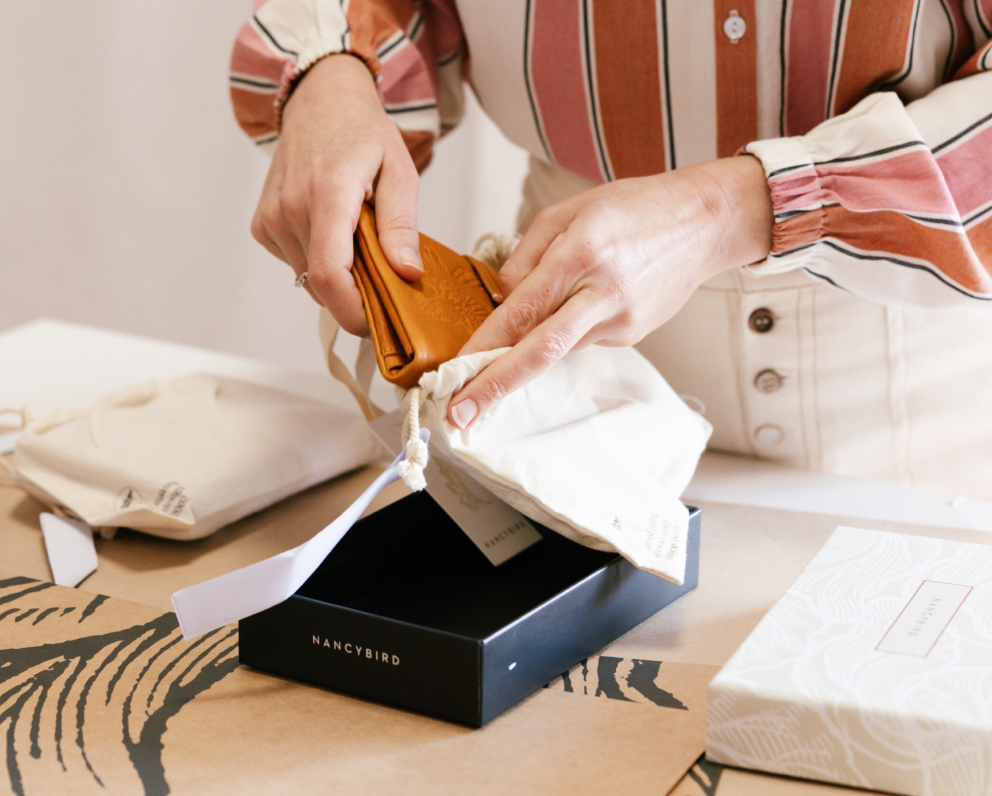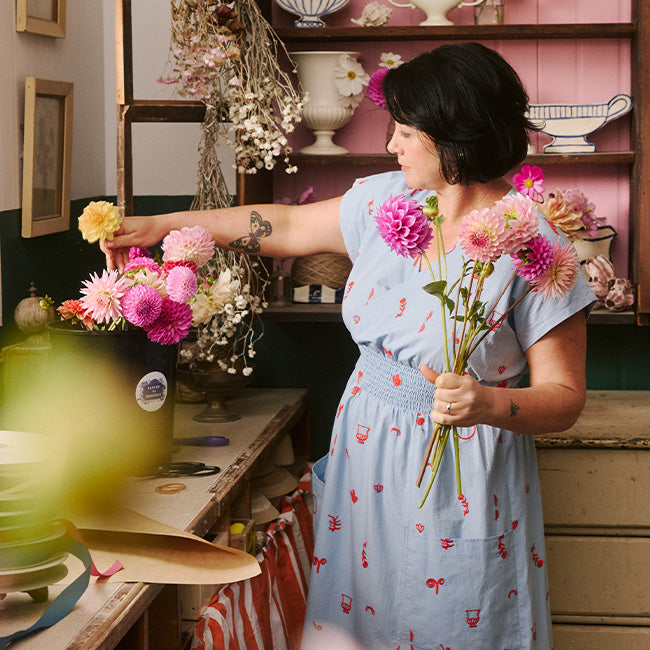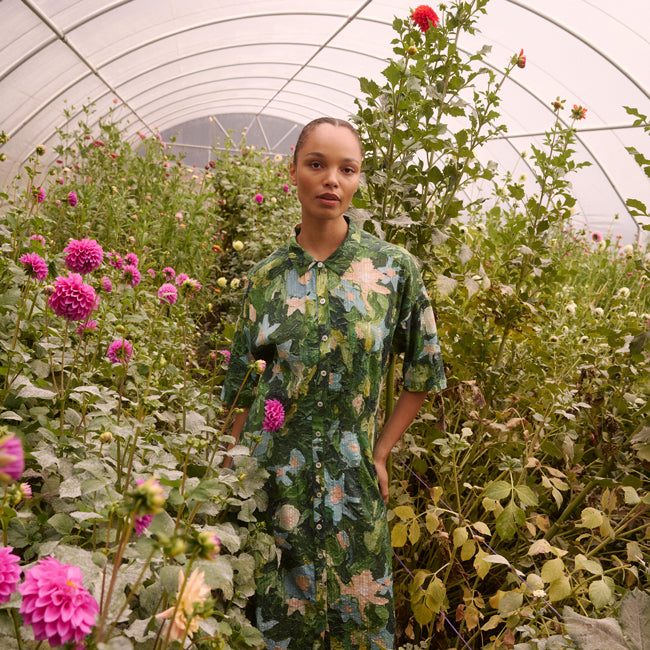Artist Spotlight - Murdie Nampijinpa Morris
Explore Nancybird’s latest collaboration with First Nation Artist Murdie Nampijinpa Morris. In creating this unique collection, Nancybird worked closely with the Warlukurlangu Artists Aboriginal Corporation, an Aboriginal owned and governed art centre located in Yuendumu that licences Murdie’s stunning artwork.
Murdie Nampijinpa Morris was born at Rabbit Flat in the 1930s, a tiny settlement in the middle of the Tanami Desert in the Northern Territory of Australia. Inspired to start painting in 2012, Murdie enjoys painting her father’s jukurrpa, Maliki Jukurrpa (Domestic Dog Dreaming) and Malikijarra Jukurrpa (Two Dog Dreaming). These dreamings have been passed down through the generations for millennia and relate directly to the land, featuring the native animals and plants that live there.
Murdie brings a modern interpretation of her traditional culture to her painting with a dynamic and playful palette of colours that has translated beautifully to Nancybird garments.

Recently Nancybird founder Emily chatted with Cecilia Alfonso the manager of Warlu Art Centre on Abc NT radio with radio host Alexandra Barwick. Read on for some highlights from this interesting conversation. Listen to the full interview here.
Can you tell us about Murdie the artist?
Cecilia: In 2004 the art started a satellite program in a nearby community. Murdie wasn't living there at that time. But in 2012 she began painting, and her style changed. It evolved into bold strikes and designs. She really hit her stride, becoming one of the top artists. We have 100 artists that regularly paint for us when the art centre is open. Murdie went from initially being very shy and unconfident to exceptionally proud. She has always been so humble and warm, but she is very proud of her success through her art.What does she make from seeing the artwork on the clothing?
Cecilia: Every time she is shown her work on the product, she just beams. She's always just so proud that her work is being seen and shared.

Whats' involved in the process of collaborating?
Emily: We work in a couple of ways with different artist. With Murdie's work Cecilia sent us through a few designs for us to chose from, and we selected a couple. We start sampling the colours and sections of the artwork on different fabrications, and it kind of develops from there. The rest of the collection hangs off that artwork - branching into colours on leather works and our knitwear.
How much of a say does the artist have?
Emily: We share the designs through the process. We collaborate, and it's always run the designs by the artist to ensure they like what we are doing.
Cecilia, we know the art centre collaborate licences to lots of other artwork to other companies. Why do you think it is worthwhile to see indigenous art transformed with these collaborations?
Cecilia: The artists love it! My main job is to facilitate the production of artwork. It gives the artists projects to work on, generating income for artists. For instance, someone like Murdie, who is unable to continue to paint, provides us with an opportunity to generate an ongoing income for her, which is essential. If the artist didn't like it we wouldn't do it. It predominately makes them proud, and it really is about getting the story out there. It also helps market the painting because we've created lots of license lines over the 20 years I've been here, but we've never deviated from our core business, making and selling those paintings. It's also an important marketing tool to sell their artwork.






